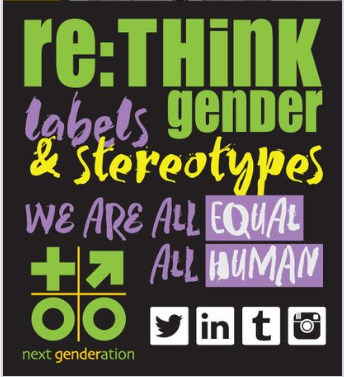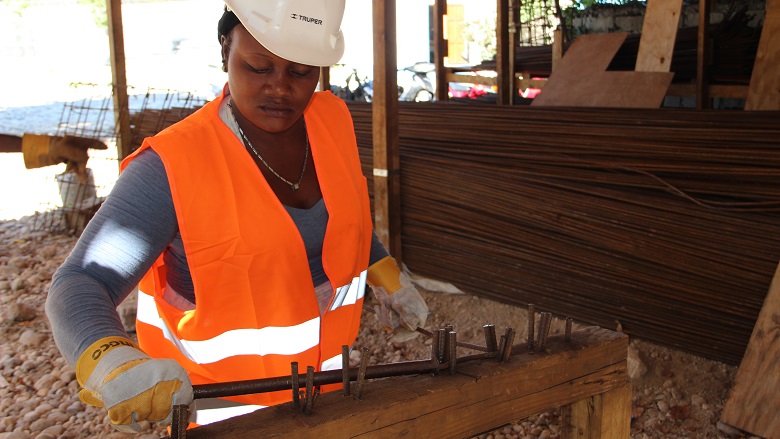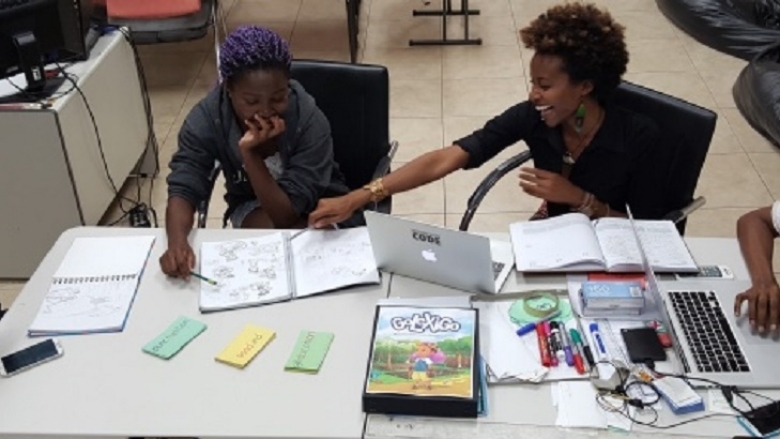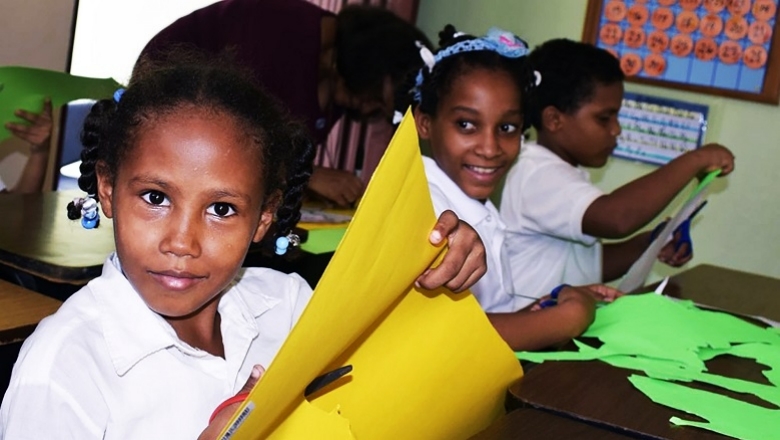PROJECT
BARBADOS IMPROVES ITS RESPONSE TO HIV/AIDS
Barbados continues its efforts to reduce new HIV infection among youth, men who have sex with men, and female sex workers. It is also improving treatment to HIV positive persons and people living with AIDS.

Barbados beach. Photo: FreeImages
CHALLENGE
The Caribbean region has had the highest HIV prevalence rate among adults outside Sub-Saharan Africa. In Barbados, the rate was 1.5 percent in 2005. The National Strategic Plan of Barbados 2005-2025 identified HIV/AIDS as one of the major threats to the economy, because it endangered the country’s human capital. The First HIV/AIDS Project [2001-2007] achieved high levels of awareness, treatment, and care, but was less successful in inducing the level of sustained behavior change required to affect the epidemic’s prevention and control. For example, although 95 percent of young people were aware that sexual relations was a way of transmitting HIV, only 21 percent used condoms.
SOLUTION
To address these challenges, Barbados drew on World Bank funding for a follow-up project aimed at supporting the implementation of the National Strategic Plan. The Barbados Second HIV/AIDS Project was designed to encourage adoption of safe behaviors and increase access to prevention, treatment and social care, particularly for high risk populations. The project also focused on organizational and institutional capacity building, and improved use of quality data. The use of disbursement-linked indicators ensured a focus on results and allowed for the development of the country’s first health information system (HIS), which improved data collection.
RESULTS
The project was designed to support the implementation of the National Strategic Plan and provide training and technical assistance for institutional strengthening. In line with support in these areas, the following key outcomes were achieved:
- The number of young men and women aged 15-24 years reporting the use of a condom the last time they had sex with a non-marital non-cohabitating sexual partner rose from 21 percent in 2006 to 72 percent in 2014.
- The number of young women and men aged 15-24 who engaged in sexual intercourse before the age of 15 fell from 20 percent in 2006 to 12 percent in 2014.
- The number of people living with HIV on first line antiretroviral regimen achieving virologic success within the first six months of treatment rose from 60 percent in 2008 to 93 percent in 2014.
- The number of men who have sex with men (MSM) who received an HIV test in the last 12 months and who knew their results increased from 50 percent in 2009 to 100 percent in 2014.
WORLD BANK GROUP CONTRIBUTION
The proposed project cost was originally US$ 94.39 million, which included a Bank loan of US$ 35 million. Bank funding provided budget support for 35 percent of investment and operational costs (US$ 89 million) and financed 80 percent of technical assistance costs (US$ 4.5 million). Due to challenges in government financing in the wake of the global financial crisis, the total project cost was US$ 72.2 million, with the Bank loan size unchanged.
PARTNERS
The main implementing agency was the National HIV/AIDS Commission (NHAC), with support from the Ministry of Health. Additional partners in the region provided financial and technical assistance. The Pan American Health Organization (PAHO) provided vital assistance during the midterm review. In addition, during the period of project implementation, the project collaborated closely with a growing number of community service organizations (CSOs). The number of CSOs working with target populations grew from two to 38 over the course of the project. By the time the project closed, the CSOs had fully implemented over 25 sub-projects.
MOVING FORWARD
The project strengthened overall capacity, improved the multisectoral responses and advanced monitoring and evaluation efforts, increasing the likelihood of technical sustainability. The NHAC developed an evidence-based Strategic Plan for 2014-2018 and is expected to continue its work going forward. Its proposed budget is sufficient to continue the prevention, treatment, and care efforts that were previously made through the project.
BENEFICIARIES
The primary beneficiaries of the project were youth, MSM, and female sex workers. At roughly 12 percent of the total population, young people were the largest targeted beneficiary group. The size of the MSM population was estimated at 1 percent. The size of the sex worker population was estimated at roughly between 1 percent and 2 percent. In addition, the project had spillover effects on the general population as a result of improvements in the health information systems.

PROJECT
Jamaican youth: taking on gender stereotypes to address sexual violence
Submitted by Jonna Lundwall, Sara Van Wie, 11/25/2015

In Jamaica, widespread violence constitutes a serious development challenge that affects men and women across generations. Young men and women are particularly at risk of experiencing violence, albeit in different forms and for different reasons.
About the campaign
#16Days blog series
 For young women, sexual violence is a particular concern: 12% of women report having been forced to have sexual intercourse at some point in their lives, and nearly half of Jamaican women report that their first sexual intercourse was coerced in some way, e.g. through violence, threats, verbal insistence, deception, cultural expectations or economic circumstance (see Jamaica Reproductive Health Survey 2008-2009 for additional data) In line with global trends, Jamaican women who are sexually assaulted are likely to know their aggressors; 85% of young women who experienced forced first sexual relations reported that the perpetrator was a boyfriend.
For young women, sexual violence is a particular concern: 12% of women report having been forced to have sexual intercourse at some point in their lives, and nearly half of Jamaican women report that their first sexual intercourse was coerced in some way, e.g. through violence, threats, verbal insistence, deception, cultural expectations or economic circumstance (see Jamaica Reproductive Health Survey 2008-2009 for additional data) In line with global trends, Jamaican women who are sexually assaulted are likely to know their aggressors; 85% of young women who experienced forced first sexual relations reported that the perpetrator was a boyfriend.
Like their victims, perpetrators of sexual violence are also young. Official crime statistics show that 57% of perpetrators arrested for rape in 2007 were young males between 16 and 30 years of age, with the highest rates among 16-20 year olds. Similarly, the largest share of persons arrested for other forms of sexual violence in 2007 were males between 16 and 25 years.
How can we explain the high incidence of sexual violence among Jamaican youth?
Through the World Bank’s NextGENDERation Initiative, we have sought to understand whether and how social and gender norms shape youth decision-making and behaviors relating to violence. By listening to young people through focus groups, social media outreach as well as school and community-based engagements, our team has been able to gain more insight into the drivers and triggers of sexual violence among youth, and to provide them with a space to think critically about how gender roles and stereotypes affect their attitudes and actions with regard to dating, relationships and sex.
Our research reveals drastically different views among young men and women as to what constitutes sexual violence. Pressure to publicly define themselves as “real” men can lead boys to exaggerate their masculinity through risky behavior and sexual experiences that focus on sexual achievement rather than intimacy. Within focus group discussions, many young men interpreted violent sex to mean “rough sex,” claiming that women enjoy it: “sometimes they like when man use roughness on them, they like it that way”. Young men perceive that women prefer a “hardcore” man over a romantic one. The majority of female participants said that violent sex was unacceptable, and that, instead, “women like to hug and kiss and touch.”
Young men generally voiced that it is a girlfriend or wife’s obligation to provide sex. Forcing sex was not a concern to many involved in focus group discussions: “no man’s girlfriend is supposed to tell him no sex tonight or tomorrow night”; “your wife isn’t supposed to withhold sex from you”. Women-only groups decried this behavior as rape – “maybe she doesn’t feel to have sex, so he’s supposed to understand. He’s not supposed to take sex. It’s rape to me”.
Rethinking gender stereotypes to change behavior
Such diverging views on sexuality and gender roles can obviously fuel tension and violence within relationships. In a bid to change mentalities and reduce the incidence of sexual violence, the NextGENDERation Initiative looks to foster constructive dialogue on gender norms through a wide range of activities, including a national social media campaign, school and community-based dialogues, and engagement of civil society and government actors involved in violence prevention in Jamaica.
NextGENDERation research exposes an immediate need for youth to develop the skills they need to help them resolve conflicts, to redefine rigid stereotypes that influence their behavior, and to help them define and pursue caring relationships based on mutual respect. Community and school-based programs are essential to providing youth with a space to reflect critically on gender norms and produce more equitable attitudes concerning gender roles, including those related to sex and dating.
While behavior change will not happen overnight; giving both genders a chance to talk about their perceived roles and the stereotypes associated with each of them is an essential first step to promote mutual understanding and respect.
The following video is one of four produced by Articulet Edutainment for the Next GENDERation Initiative, which helps young people to challenge gender stereotypes that can contribute to violent behaviour. Next GENDERation focuses on intimate partner violence, sexual violence, gang and crew violence and bullying. Partners in the World Bank facilitated initiative include the Ministries of Youth and Culture; National Security; and Education; the Planning Institute of Jamaica; the Bureau of Women’s Affairs; and, the InterAmerican Development Bank.
The Next GENDERation Initiative is a partnership between the Bureau of Gender Affairs and the Planning Institute of Jamaica (jointly led by these two agencies); the Ministries of Youth and Culture, Education and National Security; the Inter-American Development Bank and the World Bank

PROJECT

Building a strong and resilient Caribbean demands the equal involvement of women and men. The Caribbean has made significant progress in gender equality in recent years, particularly in women’s education and their participation in the labor force. But more remains to be done to push the frontier to equal opportunity.
Meet three women who are breaking the glass ceiling in their own way, promising a brighter future for the Caribbean:
“I am ready to help rebuild Haiti”
In the aftermath of Hurricane Matthew, 32-year-old Marie Carine François lost her business to the floods that devastated the south of Haiti, where she lives with her six-year-old daughter and two brothers. She was helping to clear the debris in her neighborhood, when she caught the attention of local authorities on a post-disaster assessment mission. They recruited her for training in construction to help rebuild resilient infrastructure after the disaster.
“At the end of the workshop, I can go to any building site and offer my skills to earn a living,” says Marie. “I feel more fulfilled now because I am actively involved in repairing my home, where a wall was destroyed by the hurricane. I am also proud to be directly involved in the rebuilding of our municipality.”
The workshop Marie attended is part of a World Bank-financed project to support sustainable mobility for all in Haiti by building climate resilient roads and infrastructure.
In Latin America and the Caribbean, the participation of women in the labor force rose by 33 percent between 1990 and 2014, which contrasts sharply with the global trend of a slight decline. This increased labor force participation has helped reduce extreme poverty in the region. In Haiti, 63 percent of women participate in the labor force, higher than the regional average. However, on average, women in Haiti earn 30 percent less than men.
“We are the stories that we tell ourselves”

Jamaican Kenia Mattis has always had a great passion for social entrepreneurship and education. “We are the stories that we tell ourselves,” says Kenia. Her company builds online platforms that help children develop strong language skills, find inspiration, and cultivate creativity. In 2017, Kenia launched a spin-off company specializing in learning games. “ We are truly excited about making learning fun and accessible to all,” says Kenia.
Latin America and the Caribbean has the second-highest rate of female entrepreneurship in the world: 40 percent of firms have female participation in ownership. The highest rates in the region are found in Caribbean countries, including St. Vincent and the Grenadines, and in Grenada. In Jamaica, 78 percent of women have accounts at a formal financial institution, the highest number in the region. However, women entrepreneurs tend to be concentrated in small- and medium-sized enterprises, partly due to gender-based inequalities in ownership of land and capital.
Last year, Kenia attended an acceleration program for women entrepreneurs through the Women Innovators Network in the Caribbean (WINC) program, funded by the government of Canada and implemented by the World Bank Group’s InfoDev program. Designed to jump-start women-led enterprises across the region, the program provided local entrepreneurs with mentorship, training, and networking opportunities.
94% of girls go to school in the Caribbean

At a school in western Santo Domingo, in the Dominican Republic, Mikeilis wants to become a dentist like her cousin when she grows up. Driven by her mother’s story, who had to drop out of high school when she became pregnant with Mikeilis, the 8-year-old student is determined to go to college to pursue her career goals.
Over the last 30 years, more women than men get an education in many countries, and female enrollment in education in the Caribbean has steadily improved to reach 94 percent. Girls also tend to outperform boys in standardized tests. However, high levels of teenage pregnancy and a low quality of education have become the main causes of school dropout.
The Dominican Republic’s government recently passed a National Pact for Education which prioritizes learning and improvements in the quality of education. The World Bank is supporting this reform by helping recruit and train primary and secondary school teachers, assess student learning and early childhood development services, and decentralize public school management.
Caribbean women like Marie Carine, Kenia and Mikeilis have emerged as a force for change in the region. No country can achieve its potential until all of its citizens are able to achieve theirs.
Candela Citations
- Gender Equality in the Caribbean. Provided by: The World Bank. Located at: https://www.worldbank.org/en/news/feature/2018/03/07/the-time-is-now-for-gender-equality-in-the-caribbean. License: Other. License Terms: u201cThe World Bank Group authorizes the use of this material subject to the terms and conditions on its website, Legal.u201d
- Jamaican youth: taking on gender stereotypes to address sexual violence. Authored by: Jonna Lundwall, co-authors: Sara Van Wie. Provided by: The World Bank. Located at: http://blogs.worldbank.org/latinamerica/peoplemove/jamaican-youth-taking-gender-stereotypes-address-sexual-violence. License: Other. License Terms: u201cThe World Bank Group authorizes the use of this material subject to the terms and conditions on its website, Legal.u201d
- License: Other
- Barbados Improves its Response to HIV/AIDS. Provided by: The World Bank. Located at: https://openknowledge.worldbank.org/handle/10986/24406. Project: Results in the Latin American and Caribbean Region 2016 vol. 7. License: Public Domain: No Known Copyright. License Terms: u201cWorld Bank. 2016. Results in the Latin America and Caribbean Region, 2016, Volume 7. World Bank, Washington, DC. u00a9 World Bank. https://openknowledge.worldbank.org/handle/10986/24406 License: CC BY 3.0 IGO.u201d
